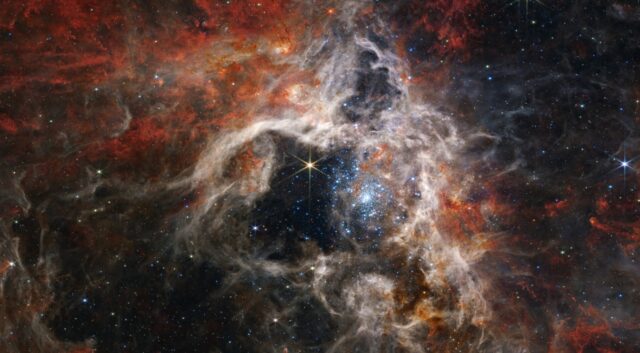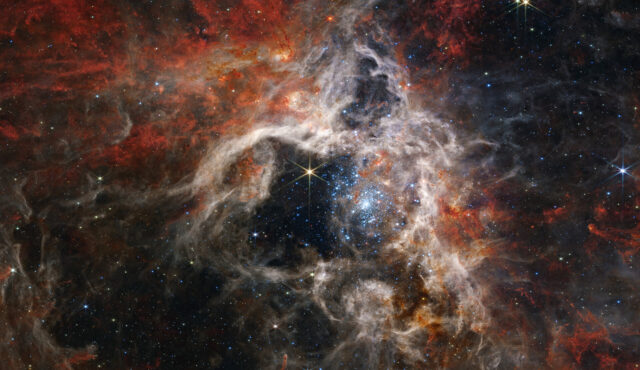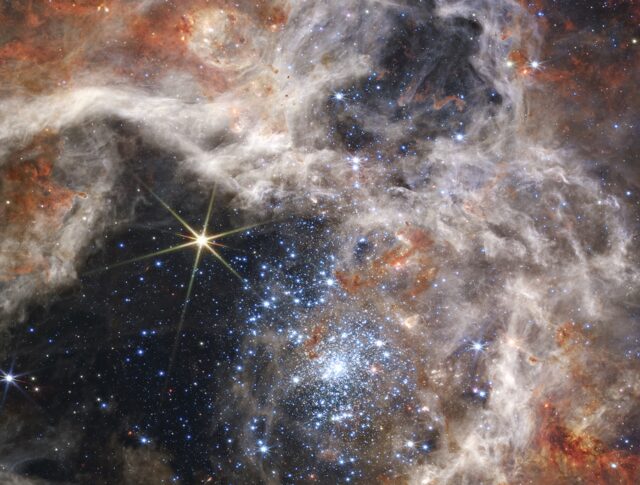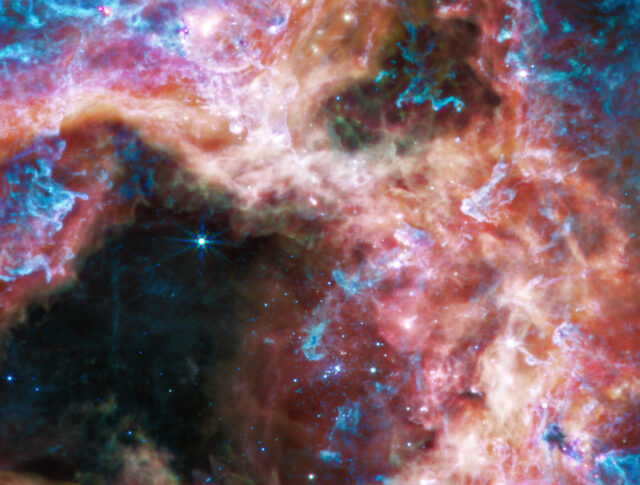Webb Telescope Captures Stunning ‘Cosmic Tarantula’

Since it opened for science in July, the James Webb space telescope has delivered a steady stream of images that are both beautiful and scientifically useful. Now, in keeping with Webb’s spidery theme, NASA reports that the space telescope has captured a “cosmic tarantula.” So, we’ve scoured the reports to bring you the very best of Webb’s spidery science images. Instead of squishing this cosmic tarantula, let’s zoom in on it and see what Webb really caught.
This post is 100% free of actual spiders, we promise.
Webb’s cosmic tarantula is actually a stellar nursery called 30 Doradus, the largest and brightest star-forming region in the entire Local Group of galaxies nearest to our Milky Way. Some 161,000 light-years away from us in the Large Magellanic Cloud, it lies within the Tarantula Nebula. This stellar nursery is home to some of the hottest, most massive stars in the visible universe. So, what better target for a space telescope and its array of infrared and visible-spectrum instruments?
The Cosmic Tarantula, Through Webb’s Infrared Eyes
Viewed through Webb’s Near-Infrared Camera (NIRCam), the Tarantula Nebula “resembles a burrowing tarantula’s home, lined with silk.” (Personally, I think that’s a reach, but sure, let’s go with it.) The pale blue stars at the center of the image have hollowed out the nebula with their unrelenting stellar winds. Only the densest clouds of stardust and gas can withstand the new stars’ constant assault. Over the eons, these dense regions form “pillars” that point back toward their stellar nursery.
Hidden inside these celestial pillars, protostars wait to take their turn shaping the nebula. The JWST’s Near-Infrared Spectrograph (NIRSpec) caught one such proto-star just as it began to cast off its veil of dust and gas. This star is so young it’s still shrouded in a cloud of insulating dust. It hasn’t even started blowing its bubble yet.
Through Webb’s Mid-Infrared Instrument (MIRI), the region takes on a whole different look. MIRI sees longer wavelengths of light. That means cooler regions stand out over warmer ones. Stars fade into the background, while cool dust and gas begin to glow. Hydrocarbons light up the surfaces of the dust clouds in blue and purple.
The JWST’s excellent spectral resolution makes these observations so crisp. The space telescope can zero in on the specific wavelengths of light its operators want to capture, with extreme precision. But Webb’s angular resolution is also outstanding among its space telescope peers. NASA explains that Hubble “sees shorter wavelengths of light than Webb can, but Webb has a mirror that is 2.75 times larger in diameter than Hubble. If you do the math, this means Hubble has about the same angular resolution at 700 nm that Webb does at 2000 nm (a.k.a 2 microns).”
One reason astronomers are so keen on looking at the Tarantula Nebula is that it may open a window into the early history of the universe. The nebula’s chemical composition is very close to the gigantic star-forming regions from the early universe, when the cosmos reached a brilliant “high noon” of explosive star formation.




Comments are closed.